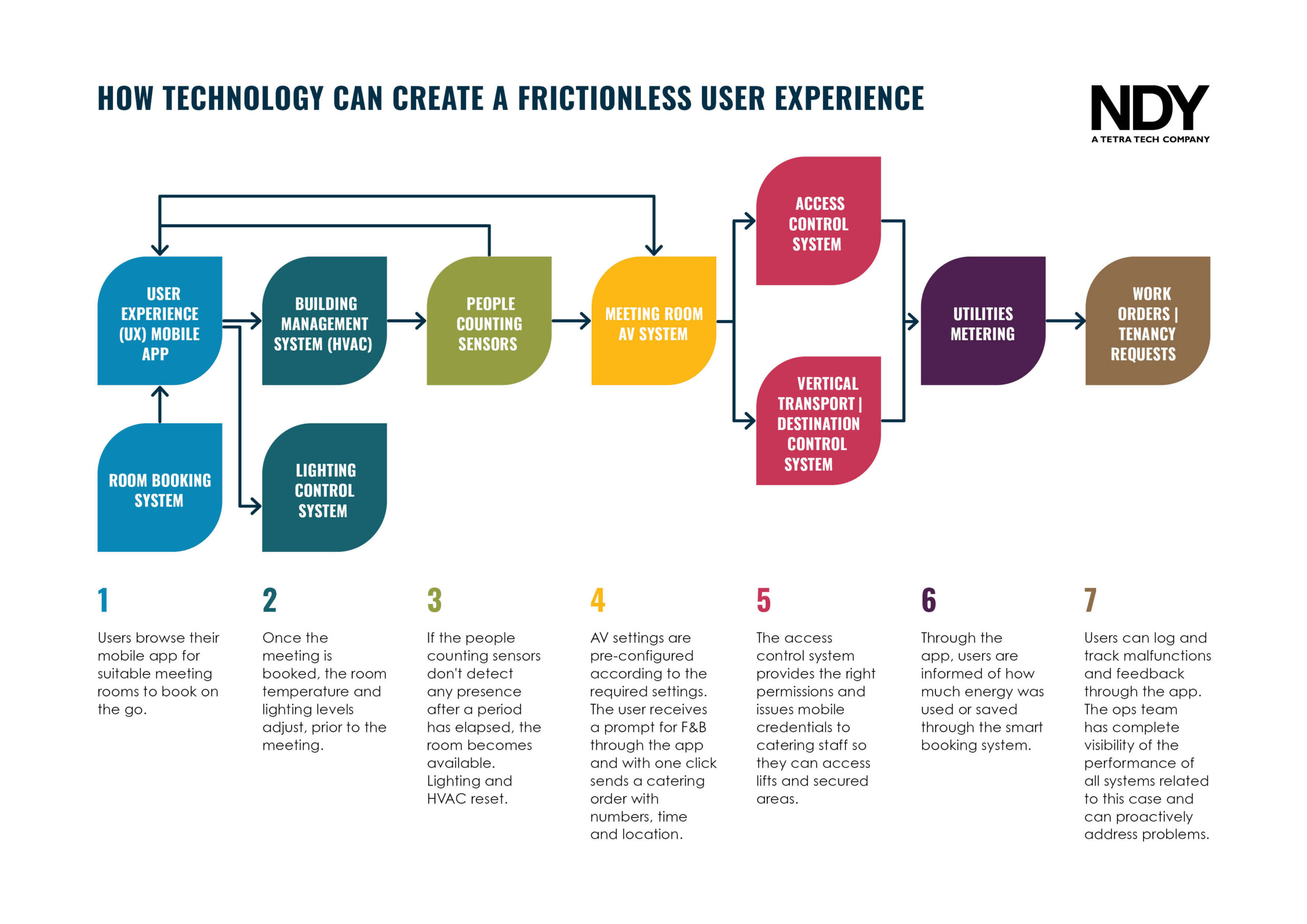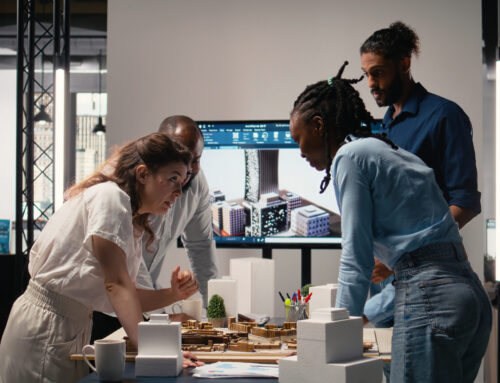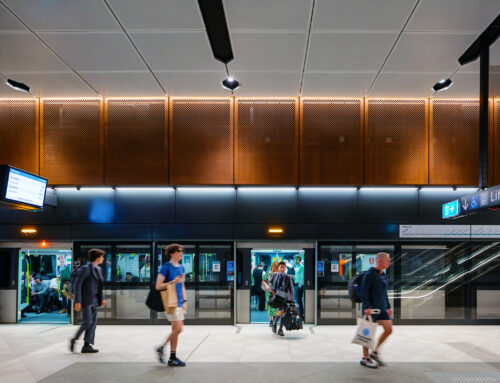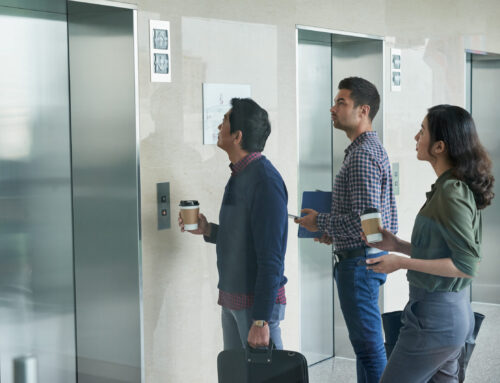Most office tenants operate in a facility created for a totally difference working culture than we have now – where employees went into the office 5 days a week, had an allocated desk that never changed and a fixed landline. Technology solutions served a single function.
Digital technology has made huge advancements in recent years with COVID accelerating this change. Technology can now provide a more enjoyable, productive and efficient office environment. New infrastructure can equip businesses with the tools and power to enable hybrid working and boost productivity.
While new offices are being built to meet the growing list of tenant expectations, older offices are needing to play catch up.
The Property Council of Australia’s Office Market Report of July 2023 revealed that only Premium and A Grade offices remain in high demand. These spaces have high quality amenities, infrastructure, security and communications – all made possible by technology.
As a business that’s all-too-familiar with the disruption of moving office, we know the value of renewing a lease. But to do this, we need to feel confident that a space can evolve with us.
The Adobe 2021 State of Work report highlighted that 49% of workers in the United States said they would leave a company if they were frustrated by their workplace tech[2]. Hassell’s Workplace Futures Survey 2023 reveals that almost a quarter of workplaces have added new technology to improve hybrid working, in particular for hybrid meetings, helping to find people and monitoring occupancy[3].
Unlock the power of your data
Many operators and owners aren’t using the data they’re capturing to its full potential. Think about utilities – water, gas, air conditioning, heating and people counting data. Data from these systems is there but, often, only the bare minimum is used to comply with regulations, i.e. NABERS reporting.
If usage trends and performance are also extracted, and correlated with other systems, we’re able to measure engagement, occupancy trends, identify faults, improve performance, and reduce downtime. This extends the life of equipment, for example plant, generator or air conditioning unit.
Identify what’s important to people
Tenants
Talented employees are becoming increasingly difficult to come by. However, the right working culture, supported by the right workplace, can be instrumental in retaining the best employees and attracting new ones. Creating an employee engagement plan that incorporates technology can help a business determine what’s vital to their current and future demographic.
Less friction
Imagine a seamless experience from the moment an employee arrives at their office. This can be achieved with an integrated workplace app that enables frictionless access and allows employees to interact with the building and services without the need to present their access card or mobile phone.
Perhaps, building occupants can be notified automatically as soon as their visitors arrive by using video analytics technology. Occupants can also trigger purchases or prepare meeting rooms with this technology.
Technology enablers: workplace app, people counting technology, CCTV cameras with facial recognition
More time
Imagine you’ve booked a meeting at 1pm for 25 people and it’s a scorcher of a day. The air conditioning system notes the high number of people in the allocated room and adjusts the temperature and airflow 10 minutes before the meeting begins to ensure a comfortable setting.
The room booking system also prompts building access for visitors and sends an email to a trusted catering provider’s inbox.
These simple automations negate the need to arrive early in the meeting room to prepare, remember visitor access or draft an email to request catering. This buys back time so employees can be more productive.
Technology enablers: Smart cameras, indoor air quality sensors, room and resource booking systems
Improved comfort
Smart technology can also offer quiet workplace zones, increased natural daylight and better air quality and humidity.
Technology enablers: ambient noise cancelling, adaptive lighting controls, blind control, human-centric HVAC controls, targeted heating and cooling for individual areas
Better connectivity
Reliable Wi-Fi and AV systems are essential in today’s workplace. Hybrid meetings – which can happen in allocated rooms, breakout areas and more, all rely on Bluetooth, wireless access points and reliable connections.
Remote workers often struggle with their home connectivity. Faster and more reliable connectivity can incentivise employees to come into the office.
With the operations team automatically informed of the health of a building’s devices, they can proactively manage potential faults and improve the employee experience.
Technology enablers: High density wireless access points, cloud-enabled platforms
Easier collaboration
Technology can facilitate highly collaborative in-person meetings. The use of interactive displays and state-of-the-art AV equipment lowers the barriers for collaboration.
Now think about how useful it would be if you were notified of where your close colleagues or project team are as you enter your office building,. Alternatively, you could plan your days in the office around who else will be there, minimising unnecessary journeys.
Technology enablers: workplace app, room and resource booking systems, digital whiteboards, interactive displays
Increased security
Our workplace is now primarily digital and with that comes an increased need for data protection. Implementing cyber resilience across all systems is essential to keep your building systems safe and secure.
Technology enablers: robust and secure network infrastructure, video analytics security management systems
Stronger community
With smarter operational technology in place, an employer or facilities team can communicate building metrics like occupancy and energy efficiency. This can encourage teams to sit together to conserve energy in unused areas by automatically adjusting lighting and HVAC systems as required.
Targeted communications can also bring together like-minded employees on topics they’re interested in, like biodiversity or community events.
The right platforms can also encourage a two-way dialogue so everyone’s voice is heard.
Targeted communications
Employers and the executive team can communicate with their workforce using push notifications, SMS messages or in-portal messages, ensuring that important messages are reaching the right people. They can also target messages, like company updates, values and surveys to specific groups, departments, offices and countries.
Technology enablers: workplace app, desk booking system, utilities management system, smart HVAC and lighting, people counting systems, display system
Retailers
Streamlined sales
With the right set up, a café or catering provider can share data with a business to allow easy ordering of food and drink. When customers pre-order, they spend less time queuing and cluttering up a, potentially small, sales area.
This relationship also helps to secure regular customers – from a simple coffee to a significant lunch order.
Technology enablers: workplace app, integration with catering and point of sale systems
Facilities and operations teams
When you unlock the capability of technology, you free up facilities teams to support tenants directly and provide quality customer service.
More time
Digital technology enables much of a facility manager’s day-to-day to be automated. Examples include automated responses to tenant issues, weekly performance reports delivered by email and push notifications if equipment fails.
Fewer unplanned disruptions
A fault detection and analytics platform enables predictive maintenance to rectify issues before it happens and, therefore, avoid downtime.
Systems that work better and last longer
When maintained well, with individual parts closely monitored, systems are more efficient, cost less to run and need replacing less often. This buys back budget for an operations team.
Technology enablers: email automation, utilities metering, HVAC controls, fault detection and diagnostic system, facilities management software
Landlords
Easy lease renewals
With the right digital infrastructure, landlords can attract top tier tenants. This includes metering systems that can record performance and maintenance, automatic energy saving mode of utilities not being used, seamless building access and effective security.
While a tenant may want to extend the digital capability of their workplace, when the right infrastructure is in place, this is possible.
Operational savings
Predictive maintenance means issues can be rectified before they occur. This leads to more efficient and longer lasting equipment. It also provides an automated log of service history for equipment like a generator, air conditioning system or plant. This makes it easy to know when parts need to be replaced or tested to comply with the relevant codes and standards.
Technology enablers: advanced metering and reporting, energy-saving control strategies, future-proofed network infrastructure, smart security management and video surveillance, integrated tenant service requests and work orders
Sustainability certification and real-time metrics
Technology can capture key metrics needed to report on sustainability performance. This is essential for many sustainability certifications, for example NABERS. Metering can also identify which systems are operating inefficiently and need to be optimised.
Technology enablers: metering and reporting, energy saving technologies
Higher sellable asset
Besides the obvious value add outlined above, building owners need to consider that the data captured by the building systems as essential for a future landlord and divested as part of the asset.
A service history that shows 5 years of well-run building systems, a track record of solved tenant requests, good air quality and low energy consumption set a building apart.
Digital technology’s magic ingredient
It all starts with data – data that can be shared across base building services and tenants.

Make a plan for your building’s entire lifecycle
Think of technology modernisation like a house renovation. There’s no way you can do everything in one hit. Get the infrastructure right and then stage upgrades to roll out when user needs change or when you have the budget. (Yes, you can put that new carpet down now the kids have left home). Be mindful of the existing infrastructure that may support the technology you anticipate upgrading.
Technologies are getting more cost-effective and easier to deploy. There’s no one silver bullet, there are plenty of options for all budgets and applications.
What should you do now? Start the conversation. What are the current challenges? What do your building users want? What do you need to effectively manage your building?
Everybody needs to be involved – from the intern who’s a digital native to the experienced building management team. It’s important to shape your technology vision on current and future needs. That’s the only way you’re going to create a modern and attractive workplace that adapts with the times and technology.










